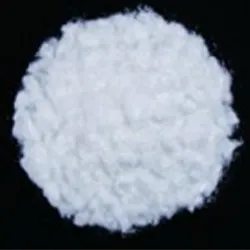
concentrated glacial acetic acid
Understanding Concentrated Glacial Acetic Acid Properties, Applications, and Safety Considerations
Glacial acetic acid, also known as ethanoic acid, is a colorless liquid that has a pungent odor and is recognized as a key chemical in various industrial processes. When we refer to concentrated glacial acetic acid, we are typically talking about acetic acid with a concentration of 99% or higher. This article delves into the properties, applications, and safety considerations surrounding concentrated glacial acetic acid.
Properties of Concentrated Glacial Acetic Acid
Glacial acetic acid is distinct from regular acetic acid — which is commonly found in vinegar (about 5-20% acetic acid) — due to its high concentration. It is characterized by its high boiling point (around 118°C or 244°F) and low freezing point (16.6°C or 61.88°F), making it a liquid at room temperature while having the potential to solidify into a crystalline form when cooled.
The chemical formula for acetic acid is CH₃COOH, and its molecular structure features a carboxyl group (-COOH), which imparts its acidic properties. Concentrated glacial acetic acid is a highly reactive substance, capable of participating in various chemical reactions that form a foundation for many industrial applications.
Applications of Glacial Acetic Acid
Glacial acetic acid serves as a vital ingredient in numerous industrial and laboratory processes. Some of its primary applications include
1. Chemical Production It is a key raw material used in the production of various chemicals, such as acetic anhydride, acetate esters, and vinyl acetate monomer, which is a precursor for polyvinyl acetate used in adhesives and paints.
2. Food Industry While glacial acetic acid itself is not typically used directly in food, acetic acid in lower concentrations is essential in food preservation and flavoring. It is commonly used in pickling processes and as a food additive, imparting acidity and enhancing flavor.
3. Laboratory Use Concentrated acetic acid is frequently employed in laboratories as a solvent and reagent in organic synthesis. Its ability to dissolve a wide variety of compounds makes it invaluable in chemical analysis.
concentrated glacial acetic acid

4. Textile Industry It acts as a dyeing auxiliary in the textile industry. It helps to fix dyes on fabrics and works in conjunction with mordants to ensure colorfastness.
5. Pharmaceuticals Glacial acetic acid is utilized in the pharmaceutical industry for the manufacture of both active pharmaceutical ingredients and various formulations.
6. Cleaning Agents Its potent acidic properties make it an effective cleaning agent that can remove mineral deposits and stains.
Safety Considerations
Although glacial acetic acid is an important industrial chemical, it should be handled with caution due to its corrosive nature. Concentrated acetic acid can cause severe burns upon contact with skin or eyes, and inhaling its vapors can lead to respiratory irritation.
Proper personal protective equipment (PPE) must be worn when handling glacial acetic acid, including gloves, goggles, and appropriate clothing. It is crucial to work in well-ventilated areas or use fume hoods to limit exposure to vapors.
In case of exposure, immediate action is necessary. Skin contact requires rinsing with plenty of water, while eye exposure mandates flushing with water for at least 15 minutes. Inhalation of vapors may necessitate moving the affected individual to fresh air and seeking medical attention if symptoms persist.
Conclusion
Concentrated glacial acetic acid is a vital chemical with broad applications ranging from chemical production to pharmaceuticals. Its versatility is matched only by the need for responsible handling procedures to mitigate associated risks. In both industrial settings and research laboratories, understanding the properties, applications, and safety considerations of this chemical ensures that its benefits can be harnessed effectively while minimizing potential hazards. As industries continue to expand their use of glacial acetic acid, ongoing education and awareness of its characteristics remain paramount to achieving safe and effective practices.
-
Understanding Synthetic Rubber OptionsNewsApr.27,2025
-
Trichloroisocyanuric Acid: Essential for Clean and Safe WaterNewsApr.27,2025
-
Sodium Dichloroisocyanurate: Key to Safe Water TreatmentNewsApr.27,2025
-
Sodium Acid Pyrophosphate: Essential in Modern Food ProcessingNewsApr.27,2025
-
Essential Water Treatment ChemicalsNewsApr.27,2025
-
Denatured Alcohol and Its Industrial UsesNewsApr.27,2025
-
The Versatile Uses of Sodium BicarbonateNewsApr.24,2025
Hebei Tenger Chemical Technology Co., Ltd. focuses on the chemical industry and is committed to the export service of chemical raw materials.
-

view more DiethanolisopropanolamineIn the ever-growing field of chemical solutions, diethanolisopropanolamine (DEIPA) stands out as a versatile and important compound. Due to its unique chemical structure and properties, DEIPA is of interest to various industries including construction, personal care, and agriculture. -

view more TriisopropanolamineTriisopropanolamine (TIPA) alkanol amine substance, is a kind of alcohol amine compound with amino and alcohol hydroxyl, and because of its molecules contains both amino and hydroxyl. -

view more Tetramethyl Thiuram DisulfideTetramethyl thiuram disulfide, also known as TMTD, is a white to light-yellow powder with a distinct sulfur-like odor. It is soluble in organic solvents such as benzene, acetone, and ethyl acetate, making it highly versatile for use in different formulations. TMTD is known for its excellent vulcanization acceleration properties, which makes it a key ingredient in the production of rubber products. Additionally, it acts as an effective fungicide and bactericide, making it valuable in agricultural applications. Its high purity and stability ensure consistent performance, making it a preferred choice for manufacturers across various industries.











